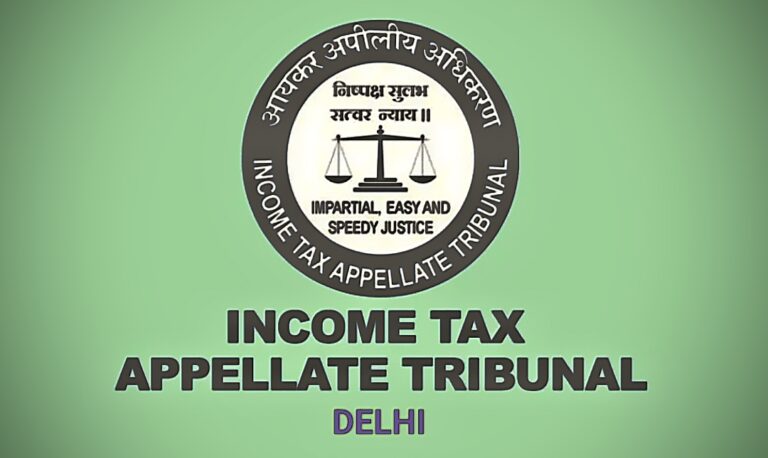The Income Tax Appellate Tribunal (ITAT), Delhi Bench, in the landmark case of Enormous Nivesh Pvt. Ltd. vs. Assistant Commissioner of Income Tax, pronounced on 30th September 2025, delivered a significant ruling concerning the applicability of Section 56(2)(viia) of the Income Tax Act, 1961, and the treatment of additions made on account of sundry debtors.
The case involved massive additions aggregating to over ₹1,112 crore, made by the Assessing Officer (AO) during scrutiny assessment. The additions were primarily based on two grounds — first, treating the fresh share allotment as taxable under Section 56(2)(viia), and second, questioning the genuineness of sundry debtors recorded in the assessee’s books of account.
Upon appeal, the ITAT Delhi deleted the entire additions, holding that the fresh issue of shares does not fall within the ambit of Section 56(2)(viia), which applies to transactions involving transfer of existing shares, not allotment of new shares. The Tribunal further observed that mere suspicion or conjecture cannot justify additions on account of sundry debtors without substantive supporting evidence.
This ruling not only provides critical clarity on the scope and interpretation of Section 56(2)(viia) but also reinforces the principle that taxation cannot be based on suspicion, particularly in matters involving large capital infusions and commercial transactions.
Case Summary
- Parties / Context: Enormous Nivesh Pvt. Ltd. filed its return for AY 2015-16 (and possibly related years) disclosing relatively low income. The Assessing Officer (AO), in a scrutiny assessment under section 143(3), made huge additions (aggregate of over ₹1,112 crore) on two grounds: (i) invoking section 56(2)(viia) on share application money / fresh share allotment, and (ii) on account of sundry debtors / creditors (i.e., disputing the genuineness or reality of the debtors).
- Tribunal’s Decision: ITAT Delhi “deleted” those additions — i.e. held that the AO’s invocation of section 56(2)(viia) was not sustainable for the fresh share allotment, and that suspicion alone on sundry debtors was not enough to sustain massive additions. The tribunal allowed the assessees’ appeals.
- Key Finding: Fresh share allotment (i.e. application money received for new shares issued) does not fall within the ambit of section 56(2)(viia) (i.e. as “income from other sources” in the hands of the recipient) as per the ITAT in this case.
- On Debtors: The tribunal also rejected the AO’s addition on account of sundry debtors merely based on suspicion. The AO needed to bring more cogent evidence to support addition.
Legal Issues & Principles Involved
To understand the significance, we must see what section 56(2)(viia) says, and the broader jurisprudence.
Section 56(2)(viia) — “Income from other sources” on share application money or share premium in certain cases
Under section 56(2)(viia) (as it stood for those years), if a closely held company receives money from a person for issuing shares in excess of the “fair value” of shares, the excess may be treated as income of the recipient in the hands of the recipient (i.e. the company) under “Income from Other Sources,” unless certain conditions are satisfied.
Key points or thresholds/conditions typically include:
- The “payer” cannot be a “relative” in certain defined sense.
- The issue must not be from a person who holds certain percentages already.
- The “excess money” over fair market value (FMV) is taxed, unless it falls under an exemption (if any).
- Jurisprudence has evolved as to what payments are “for shares” vs. return of capital vs. subscription, etc.
Hence, whether fresh share allotment (i.e. new shares being allotted on application money) is covered under section 56(2)(viia) is a critical question.
Tribunal’s Holding: Fresh Allotment Not Covered
The ITAT in this case held that fresh share allotment would not be covered by section 56(2)(viia). In essence, they appear to accept that the receipt of moneys for new shares (i.e. fresh capital) does not amount to “income” under 56(2)(viia). The logic would be that it is consideration for issuance of shares and part of capital raising, not gratuitous or without adequate consideration beyond fair value.
This is a beneficial ruling for companies undergoing capital infusion, since it limits the risk of AO invoking section 56(2)(viia) on capital receipts.
On Sundry Debtors / Creditors
Another commonly contested area is whether the AO can make additions based on “suspicion” that certain sundry debtors are bogus, non-existent or not recoverable. According to this reported decision:
- The Tribunal held that suspicion alone is not sufficient; there must be substantive and corroborative evidence (e.g. confirmations, audit trail, ability to recover, etc.) to sustain additions on such accounts.
Thus, even in face of huge sums, the AO must build a proper evidentiary foundation rather than rely purely on “lack of satisfaction” or suspicion.
Implications & Significance
- Precedential Value (for Delhi / ITAT Decisions)
This ruling adds authority (at ITAT Delhi) that fresh share allotments should not automatically be treated under section 56(2)(viia). Other assessees, particularly in Delhi jurisdiction, may rely on this in appeals. Its persuasive value in other benches or jurisdictions will depend on whether they accept the legal reasoning. - Protection for Capital Infusion
Companies raising new capital (e.g. promoters or outside investors) can push back against AO’s attempts to tax the premium or subscription over “fair value” under section 56(2)(viia), especially if backed by proper valuations and documentation. - Stricter Standard for AO on Debtors Additions
It reinforces that AO must go beyond suspicion, and gather cogent evidence (e.g. confirmations, third-party verifications, cash flows, realization, etc.) if challenging the genuineness of sundry debtors. - Potential for Broader Reconsideration
This decision may encourage other ITATs or High Courts to revisit how they interpret 56(2)(viia) w.r.t. fresh capital, and the limits of AO’s power in large addition cases. -
Vigilance on Valuation & Documentation
Even though this ruling is favorable, careful valuation (fair value, auditors’ reports, independent valuation, etc.) and documentary support are critical. If the AO can show the subscribed amount is far above true value without justification, it might still trigger challenges.
